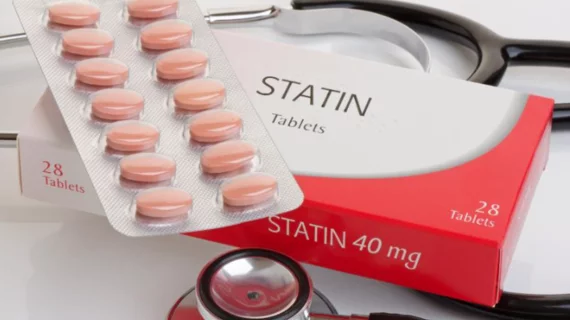Study supports higher risk thresholds for initiating statins
The authors of a new study in the Annals of Internal Medicine believe too many patients are being recommended statin therapy, and contend that current guidelines don’t fully consider the risks of the popular drugs.
“Guidelines emphasize benefits, and although harms are not ignored, they seem to have little effect on recommendations,” noted a trio of researchers from the University of Zurich in Switzerland, led by Milo A. Puhan, MD, PhD. “The problem with such an approach is that eligibility for statins increases with age because more events can be prevented in elderly persons who are at higher CVD risk. … However, when harm outcomes, which also increase with age, are considered, the benefit-harm balance of statins becomes less favorable.”
Most guidelines recommend statin therapy if the expected 10-year risk of cardiovascular disease (CVD) exceeds 7.5 percent to 10 percent, Puhan et al. noted, although the most recent U.S. guidelines also prioritize clinician-patient discussions and suggest the use of coronary artery calcium scoring to identify low- to intermediate-risk patients that can safely forego or at least delay statin treatment.
To determine whether the recommended risk thresholds are “justified,” the authors took CVD prevention rates associated with statins from previous research and measured those beneficial effects against a range of adverse events, which were given weights based on a patient preferences survey. The number of expected events for each outcome was calculated, weighted and then summed to yield one benefit-harm index. This approach was modeled across different subgroups based upon age and sex.
The researchers found that men in their early 40s would receive a net benefit from statins at a 10-year CVD risk threshold of 14 percent. For men aged 70 to 75—the oldest group analyzed—a 10-year risk threshold of 21 percent would be required to observe a net benefit.
Similarly, the risk needed for net benefit was higher in older women, increasing from 17 percent for those in their early 40s to 22 percent for women in their early 70s.
“To our knowledge, this is the first quantitative benefit-harm balance modeling study on statins for primary prevention of CVD and the first study to determine 10-year risk thresholds above which the benefits outweigh the harms over 10 years,” Puhan et al. wrote. “We found that statins are likely to provide net benefits at substantially higher risk thresholds than the 7.5 [percent] to 10 [percent] thresholds to which most guidelines refer.”
The authors also analyzed four specific statins and determined atorvastatin had the most favorable benefit-harm balance, followed by rosuvastatin. They said this is likely because of their more potent cholesterol-lowering effects compared to the other two drugs analyzed (simvastatin and pravastatin).
The difference in risk thresholds between men and women were attributed to variations in baseline risk for adverse outcomes including diabetes, cancer and cataracts, plus differential effects of statins on myopathy and renal dysfunction, according to Puhan and colleagues.
In a related editorial, two physicians from Yale School of Medicine noted the analysis by Puhan et al. essentially was a “worst-case scenario estimate of the net benefit” of statins. The researchers adjusted for the competing risk of death and also included adverse effects from a network meta-analysis they’ve yet to publish.
Still, Ilana B. Richman, MD, and Joseph S. Ross, MD, MHS, said the study is an important reminder of potential risks associated with statin therapy and the importance of patient-centered decisions.
“Some patients may favor a risk-averse approach in which harms associated with therapy are given greater weight than potential benefits, but others may prefer to give greater weight to potential benefits,” the editorialists wrote. “The onus is on physicians to fairly summarize the evidence and guide patients through the decision-making process.”

